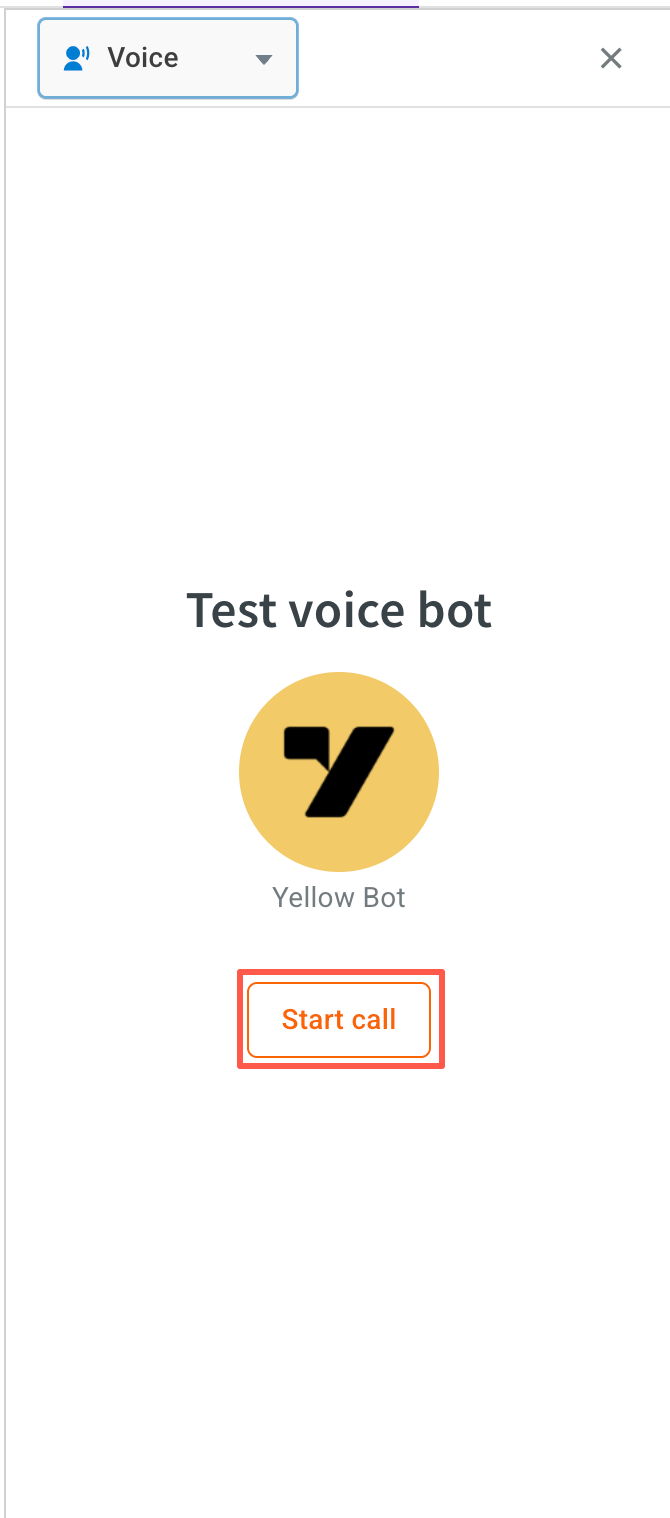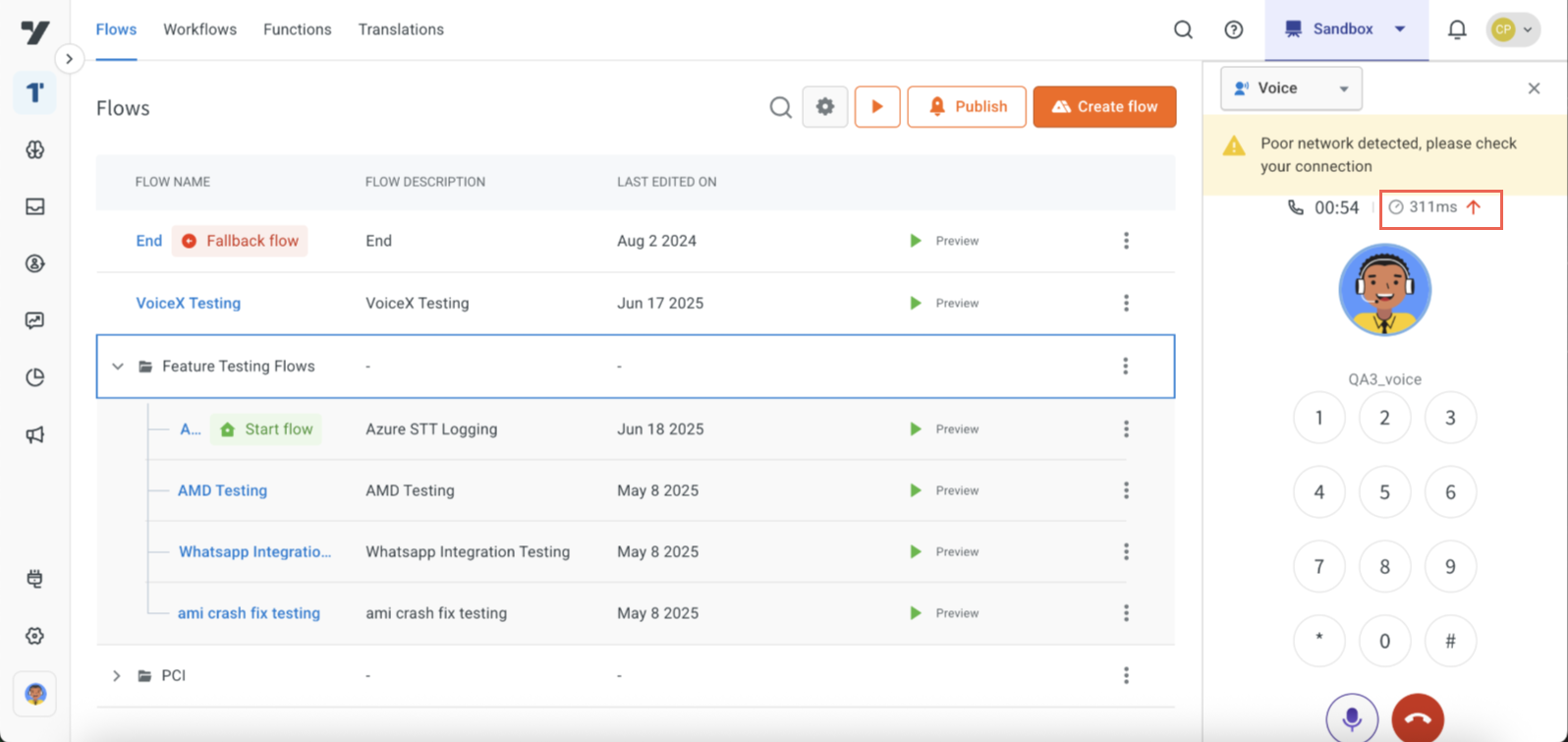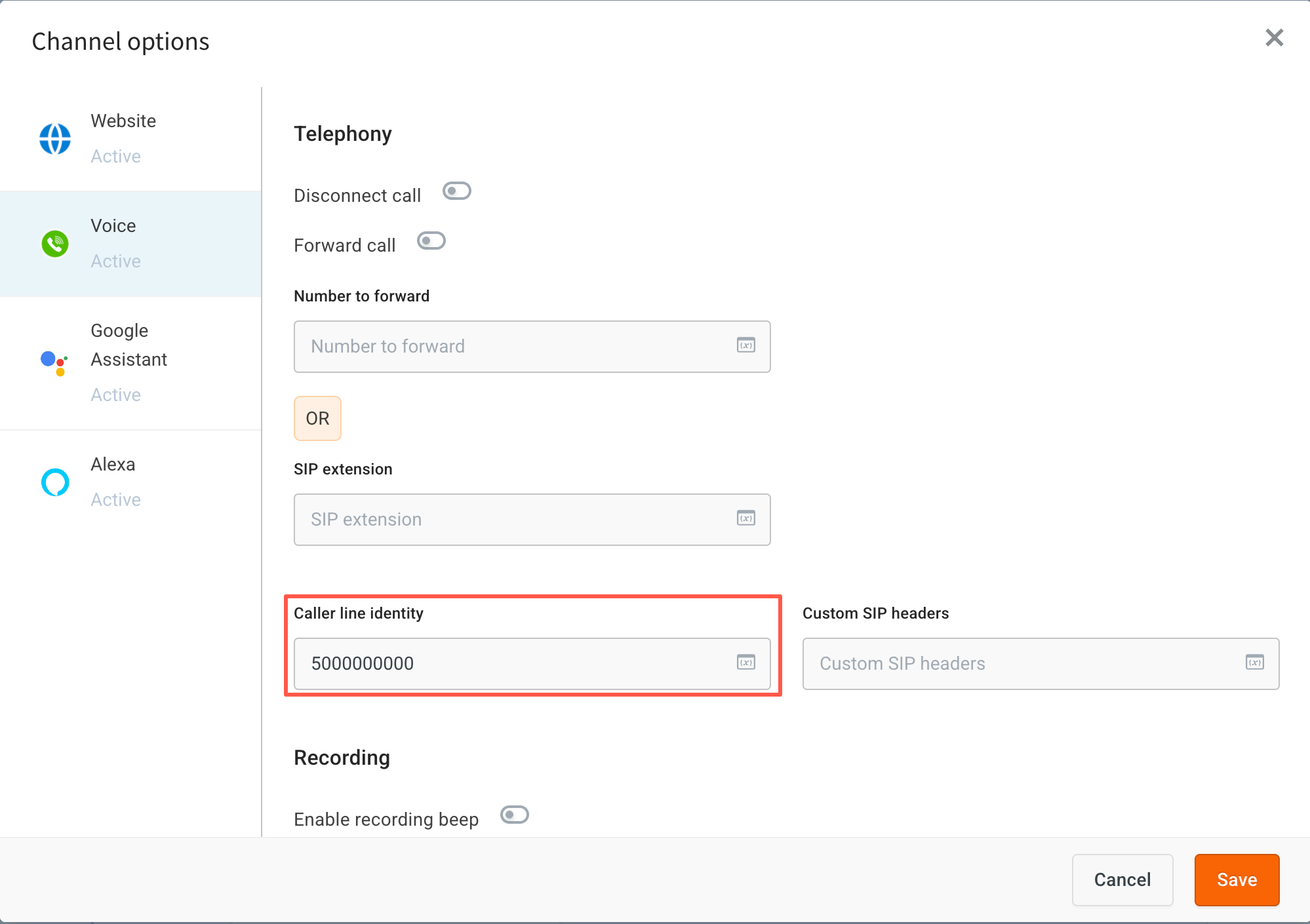Testing Voice agents using WebRTC feature
Yellow.ai offers a WebRTC (Web Real-Time Communication) calling feature that enables browser-based calls directly from the platform. This allows bot developers to simulate and experience agent interactions with both Indian and international numbers—without the need to procure or map PSTN phone numbers.
By removing the dependency on external telephony systems, it significantly speeds up voice agent development and testing.
This feature is especially useful for testing voice agents and previewing their responses for customers outside India (e.g., in the US, UK, or UAE).
WebRTC testing is enabled by default at no cost for the following regions: R0, R2, R3, R4, and R5. To enable it for regions R1, R6, or R7, please contact the support team at [email protected].
Testing voice agent using WebRTC
WebRTC testing is only available in Sandbox, Staging and Development environments and not available in Production/Live.
To test a voice agent using the WebRTC feature, follow these steps:
-
Open the Preview Mode
- Navigate to Automation > Flows > Preview.
- Select Voice from the dropdown.

You cannot preview an individual flow for voice agents. When you click Preview, the entire agent is launched starting from the Welcome/Start flow. Switching between flows during the session will disconnect the call.
-
Start the Call
- Ensure microphone access is granted.
- Click the Start Call button to initiate the WebRTC-based call.

-
Answer and Test
- Interact with the voice agent to test various call flows and behaviors.
- Use the on-screen keypad to enter DTMF inputs, if required. WebRTC calls support DTMF INFO-based input transmission instead of audio tone detection.
- Click Disconnect once your testing is complete.

Network monitoring & feedback
- If internet connectivity drops or either party disconnects, UI will display feedback indicating disconnection.

- If packet loss or jitter exceeds acceptable thresholds, visual warnings will be shown to notify the developer.
- When making calls to numbers in different regions, you may experience latency, with the Round Trip Time (RTT) displayed. However, RTT isn't a direct indicator of connection quality. For example, a call from Region 0 to a voice agent hosted in Region 4 might show around 300ms RTT, even with excellent connectivity.

Agent transfer during testing
When testing a voice agent and the agent transfer flow is triggered, the call will remain active for up to 2 minutes before being automatically terminated by the system.
This 2-minute limit applies only when the call is transferred to a human agent. All other agent interactions are not subject to this timeout.
(Optional) Set a Caller Line Identity (CLI)
To display a test-friendly number (instead of the default voice agent number) when your call connects to a human agent during WebRTC testing, you can configure a Caller Line Identity (CLI):
- Go to Node > Settings > Channels > Voice.
- In the Caller Line Identity field, enter the number you want to show as the caller ID.
- Click Save.

Before call disconnection, developers should validate
- The call is successfully transferred or assigned to a human agent.
- Relevant metadata (e.g., user’s email, name, or transcript) is correctly passed to the agent interface.